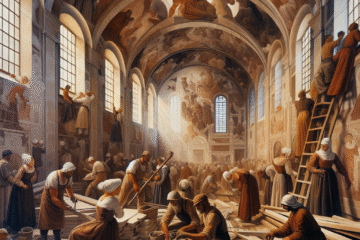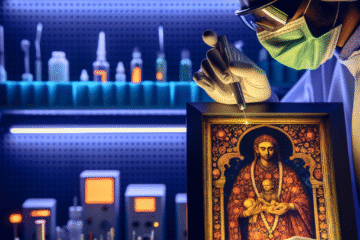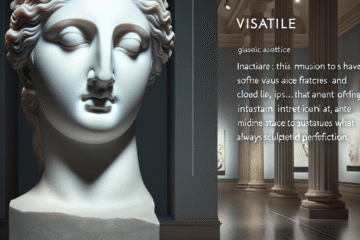Introduction: The Baroque as a Global Language of Power and Devotion
When we hear the word “Baroque,” visions of gilded churches, theatrical paintings by Caravaggio, and ornate palaces from Versailles to Vienna often come to mind. Originating in late 16th-century Europe, the Baroque style was characterized by emotion, dynamism, and grandeur. It was a powerful aesthetic vehicle for religious fervor and absolute monarchy—making visible the invisible forces of divine and earthly power. But beyond its European roots, Baroque art underwent astonishing transformations across the globe. In Latin America, India, and Southeast Asia, local artists and craftsmen reinterpreted Baroque aesthetics, incorporating indigenous materials, forms, and symbolism. This blog post explores the Global Baroque, where the style became a cross-cultural phenomenon shaped by colonialism, missionary zeal, and indigenous agency.
Chapter 1: The Birth of the Baroque — Europe’s Dramatic Stage
The Baroque began in Italy during the Counter-Reformation, a period of religious upheaval as the Catholic Church responded to the challenge of Protestantism. Artists like Gian Lorenzo Bernini, Caravaggio, and Peter Paul Rubens championed a new kind of art—emotional, immersive, and theatrical. Churches became stages for spiritual transformation, adorned with swirling clouds of angels and ceiling frescoes that opened up into heaven itself.
Baroque art was not just stylistic; it was ideological. In a time of religious division and emerging empires, it communicated messages of divine authority, colonial conquest, and human drama. As European imperial powers expanded, they carried this visual language across the seas—not merely as decorative excess, but as a tool of persuasion, conversion, and cultural negotiation.
Chapter 2: The Andean Baroque — Syncretism in the Spanish Colonies
In the vast territories of the Spanish Empire in Latin America, the Baroque style encountered and intertwined with Indigenous and African cultures. Nowhere is this synthesis more evident than in the “Andean Baroque” that flourished in present-day Peru and Bolivia.
The Jesuit missions, particularly those in the Andes, sought to convert vast numbers of Indigenous people. They built churches that mirrored European models but utilized local resources and artisans. The result was a hybrid Baroque, rich in local symbolism. For instance, the Church of San Lorenzo in Potosí and the Cusco School of painting featured European saints dressed in Andean textiles. Angels wielded muskets, and Madonna figures resembled Pachamama, the Inca Earth Mother.
Philosophically, this Baroque represented a visual negotiation. Indigenous cosmologies didn’t disappear; they were translated into a Christian idiom. Technologically, local stonework and goldsmithing, steeped in pre-Columbian traditions, gave Baroque churches a distinctly non-European texture.
Chapter 3: Indo-Portuguese Baroque — Goan Splendor and Sacred Drama
When the Portuguese established a stronghold in Goa, India, in the 16th century, they brought Catholicism and with it the Baroque style. The churches of Old Goa, like the Basilica of Bom Jesus and Se Cathedral, rivaled those of Lisbon in scale and ornament.
But the Indo-Portuguese Baroque was more than mimicry. Indian craftsmanship, especially in wood carving and ivory, allowed for a unique reinterpretation. Goan altarpieces burst with tropical flora, twisted Solomonic columns (inspired by the Temple of Solomon), and elaborately dressed figures reflecting local attire and artistic preferences. Christian scenes featured Indian motifs, and saints bore physiognomies subtly drawn from local communities.
This was also a philosophical reconciliation. While the Baroque style emphasized divine mystery and emotional grandeur, Indian traditions were deeply devotional with their own long-established narrative art. The two aesthetics met in a type of visual symphony—resonating with local audiences while maintaining the hierarchical goals of missionary art.
Chapter 4: Southeast Asia’s Hybrid Baroque — The Thai and Filipino Experience
Baroque art also reached Southeast Asia, especially in the Philippines and, to a lesser extent, Thailand. In the Philippines, under Spanish colonial rule for over 300 years, the Baroque transformed the islands’ visual culture.
Churches such as San Agustin in Manila and Paoay in Ilocos Norte faced practical challenges: earthquakes, typhoons, and tropical conditions. The solution? “Earthquake Baroque” — structures with thick buttresses, wide towers, and low, massive stonework. While inspired by European prototypes, these churches incorporated indigenous motifs and incorporated adaptative engineering, blending style and function.
Filipino artists and artisans infused saints’ images with Malay features and local textiles. Religious festivals used elaborate, almost theatrical staging—an echo of Baroque pageantry—with performances blending Christian themes with pre-Hispanic rituals.
Meanwhile, in Buddhist Thailand, Baroque influence manifested in subtler ways. Although never colonized by Europe, Thailand engaged in active trade and diplomatic relationships with European powers. Thai royal gifts and architecture in the late Ayutthaya and early Rattanakosin periods displayed flourish and detail that echoed Baroque extravagance, especially in temple ornamentation and costume stylization.
Chapter 5: The Legacy and Revival of the Global Baroque
The Global Baroque’s legacy is not confined to history books—it lives on in architecture, religious practices, and contemporary art. Artists across Latin America, India, and Southeast Asia continue to mine Baroque symbolism to explore themes of identity, colonial memory, and spiritual fusion.
In Mexico, contemporary artists like Teresa Margolles and Carlos Amorales draw upon the Baroque’s emotional intensity to comment on violence and history. In India, Baroque elements in church architecture remain vibrant symbols of cultural resilience in minority Christian communities. Meanwhile, in the Philippines, the crossroads of tradition and technology are giving rise to digital reinterpretations of sacred art.
Furthermore, the philosophical undercurrent of the Baroque—expressing the infinite, the emotional, and the transcendent—resonates deeply in today’s globalized and pluralistic societies. As we become ever more interconnected, the Global Baroque reminds us of the complex beauty born when cultures collide, adapt, and create anew.
Conclusion: Reimagining the Baroque in a Global Mirror
The story of the Baroque is not a linear tale of European dominance; it is a kaleidoscopic narrative shaped by exchange, resistance, and reinvention. From silver mines in Potosí to the mango trees of Goa and the volcanic plains of the Philippines, Baroque art took root in foreign soil and blossomed into forms that celebrated both the spiritual and the terrestrial.
In looking beyond Europe, we uncover not only a richer understanding of the Baroque but also a broader view of art history itself—one that listens to voices across continents and centuries. The Global Baroque teaches us that beauty, like power, is never singular in form or origin—it is always negotiated, hybrid, and alive.


